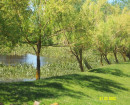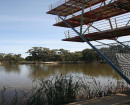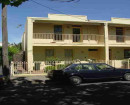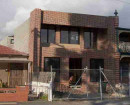FORMER COMMONWEALTH AIRCRAFT CORPORATION HANGAR (DISMANTLED & RE-ERECTED)
112 STUART ROAD TYABB, MORNINGTON PENINSULA SHIRE
-
Add to tour
You must log in to do that.
-
Share
-
Shortlist place
You must log in to do that.
- Download report
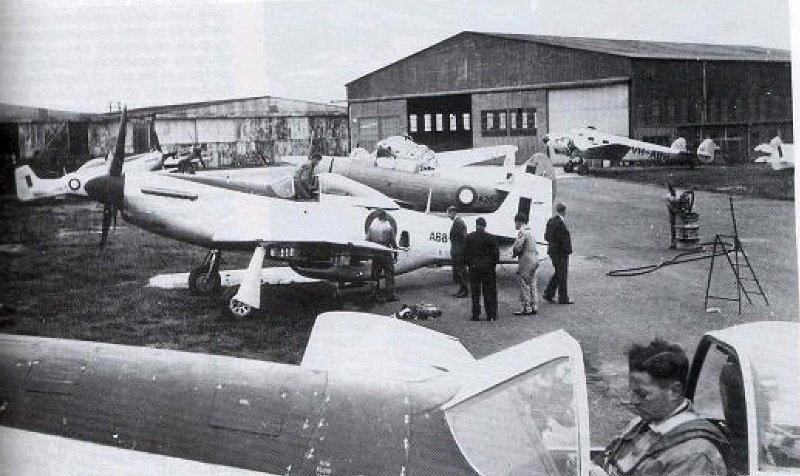

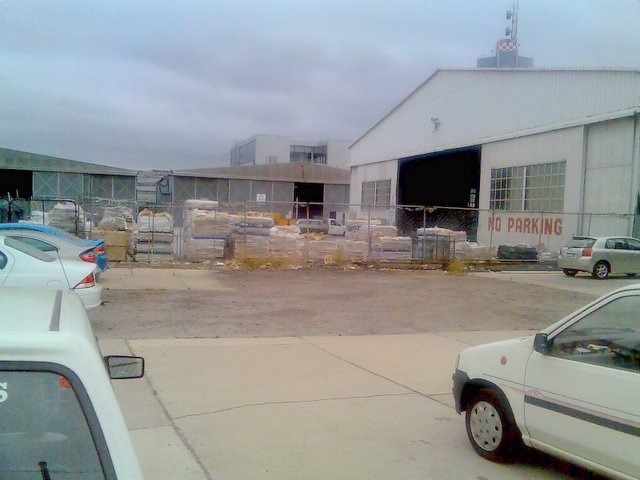
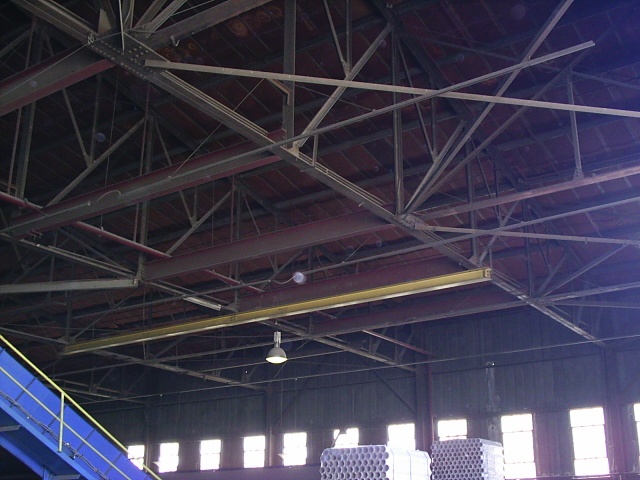

Statement of Significance
THIS BUILDING WAS DISMANTLED AND REMOVED FROM LORIMER STREET PORT MELBOURNE AND MOVED TO TYABB AIRPORT
What is significant?
The former Commonwealth Aircraft Corporation factory was constructed from 1937 to manufacture military aircraft. The only remaining buildings of the extensive factory are a section of saw tooth factory to the west (now part of Hawker de Havilland/Boeing) and four hangars at the eastern end of the former factory at the corner of Lorimer Street and Todd Road. These hangars, dating from the Second World War, comprise one US made Butler Hangar and three British designed Bellman Hangars. The remaining Butler Hangar is one of two erected in 1942 for the assembly and flight testing of US aircraft. The other was relocated out of Victoria in 1943.
The Commonwealth Aircraft Corporation was conceived in 1935 by Essington Lewis (1881-1961), the managing director of BHP. It was a private company formed by a consortium including BHP and GMH to manufacture military aircraft with the intention of providing Australia with the tools to fight the modern war that was looming. Land was selected adjoining the recently completed GMH factory at Fishermans Bend. The manager of the new factory was Lawrence Wackett (1896-1982), pilot, designer and manufacturer. The factory manufactured under licence a modified US designed advanced trainer which became known as the Wirraway. Other wartime aircraft to come from the factory included the Wackett elementary trainer, the Mustang and, famously the Boomerang, a fighter aircraft conceived, designed and manufactured in little over three months.
Fishermans Bend became a centre of wartime aircraft industry with the adjacent Department of Aircraft Production factories and the Aeronautical Research Laboratories. After World War II these facilities have continued manufacturing and assembling aircraft. The Commonwealth Aircraft Corporation was taken over in 1986 and the majority of its buildings were demolished in 2003-04.
After the departure of the Americans in 1943, the single remaining Butler hangar was used mainly as a shelter for factory aircraft undergoing flight testing. A portion of the hangar was walled off and used for the manufacture of a prototype of an advanced Australian designed fighter, the CA15, which only flew in 1946. The Butler Hangar is a steel framed structure still clad in its original ribbed metal sheeting, an early use of this profile which has now replaced corrugated iron for large industrial structures. The Butler Manufacturing Company, which produced many models of hangar during World War II, is still the world's largest manufacturer of steel prefabricated buildings and a prolific supplier of hangars worldwide.
How is it significant?
The Butler Hangar is of significance to the State of Victoria for its rarity and uniqueness, and its historical, architectural and scientific (technical) significance.
Why is it significant
The Butler Hangar, because of its comparative rarity, its direct association with the entry of the United States into the Pacific theatre of World War II (and the consequent supply of American military aircraft) and its association with aircraft manufacture, is of State significance.
The Butler Hangar is historically significant as a place in which Australia's most advanced military plane, the CA 15, was developed.
The hangar is of architectural and scientific (technical) importance as an intact example of a prefabricated and transportable hangar. It was designed in such a way as to permit dismantling and re-erection and for this reason, its removal to another aerodrome or site of aeronautical association, can be entertained.
Whilst not considered to be of State significance, the Bellman Hangars share this design imperative and it is highly desirable that if their demolition is subsequently permitted by the local planning authority, that stipulations concerning their sympathetic dismantling, so as to permit re-erection, are made at that time.
-
-
FORMER COMMONWEALTH AIRCRAFT CORPORATION HANGAR (DISMANTLED & RE-ERECTED) - History
(From NT nomination)
CONTEXTUAL HISTORY
From the mid 1930s it became increasingly evident that the militarisation of Germany, and to a lesser extent Italy, and the militarisation of Japan and its military expansion into China, could lead to global war. As a result of these factors several Australian industrialists, including Essington Lewis of BHP, decided to create an Australian aircraft manufacturing company capable of supplying the Royal Australian Air Force (RAAF) with locally manufactured military aeroplanes as a contingency against the eventuality that aircraft might not be available from overseas in time of war. The culmination of this initiative was the creation of Commonwealth Aircraft Corporation (CAC) with manufacturing facilities located at Fishermen's Bend on the eastern bank of the Coode Canal of the Yarra River on 146 acres of land. A factory, initially consisting of 141,270 square feet of floor space, was constructed for the manufacture of aircraft and aero engines. A landing strip was constructed on land adjacent to the factory where aeroplanes could be test flown before being taken over by the RAAF. CAC's first product was the Wirraway, a slightly modified version of a North American designed aeroplane licence built in Australia. The prototype first flew in June 1938. It was a general purpose military aeroplane chosen primarily because it would be useful to the RAAF and was relatively simple to build.
The fact that CAC had chosen to manufacture an American rather than a British aeroplane did not sit well with many Australians at a time when Empire loyalty was seen as a cornerstone of national and Empire defence. Consequently the government decided, in 1939, to set up facilities to manufacture the British designed Bristol Beaufort twin engine bomber in Australia. However, unlike CAC where all manufacturing facilities were located at Fishermen's Bend, components for the Beaufort were manufactured at facilities across Australia (such as railway workshops) and assembled at a new facility constructed by the government adjacent to the CAC facility at Fishermen's Bend. This made the two co-located facilities the largest aeroplane manufacturing complex in Australia that played a key part in Australia's wartime aeroplane manufacturing and thus national defence. These facilities laid the foundation for the development of precision engineering and manufacturing that led to the development of considerable manufacturing capacity in Victoria after the war, including automotive manufacturing.
The government facilities were known initially as the Beaufort Division of the Department of Aircraft Production and later as the Government Aircraft Factory (GAF). During World War II CAC manufactured Wirraway general purpose aircraft, Wackett trainers, Boomerang fighters and Mustang fighters at its Fishermen's Bend plant. The Beaufort Division produced Beaufort bombers and Beaufighter strike fighters. By the end of the war CAC had produced 200 Wackett trainers, 249 Boomerang fighters and 717 Wirraways. Although CAC also produced some 80 Mustang fighters during the war the program was well behind schedule and the RAAF acquired United States manufactured Mustangs as a stopgap until CAC manufactured ones became available, largely in the immediate post-war period. The Beaufort Division produced 700 Beauforts and 329 Beaufighters. At the height of its activity in June 1944 the industry Australia wide employed 44,000 men and women, up to a third of them being women. (A full account of aeroplane manufacture in Australia during the war can be found in D P Mellor, The Role of Science and Industry, Australia in the War of 1939-45 series, Canberra, 1958, pp.381-422.
Following declaration of war in Europe in September 1939 Australia's main contribution to that war effort was the supply of manpower to Britain. The most significant Australian contribution was its part in the Empire Air Training Scheme (EATS) that had begun operation by the end of 1939. Under this scheme thousands of Australians were selected and trained as pilots, navigators, wireless/air gunners and other aircrew to a basic standard before they went to Canada for further training and then Britain to enter the war. CAC's Wirraway and Wacket trainer aircraft played a significant part in that training, as did a large number of British aeroplanes such as Fairey Battles and Avro Ansons that were brought to Australia to take part in the training program. The inauguration of the EATS saw the development of many airfields across Australia and the erection on them of a large number of Bellman Hangars in which aeroplanes could be housed and serviced. Because they were transportable these hangars were frequently relocated to airfields where they were most urgently needed.
The entry of Japan into the war in 1941 also brought the United States into the conflict. It also brought a dramatic change to Australia as the rapid advance of Japanese forces through the Phillippines and Malaya placed Australia under threat of invasion. CAC designed and put into production the Boomerang fighter in a period of five months. By February 1942 the United States and Australian governments were co-operating very closely in many areas of mutual defence, most importantly perhaps the American use of Australia as a base from which to build up the strength of its military forces in the South West Pacific. Among other things Australian aviation facilities were used as bases at which United States aeroplanes ranging from single engine fighters to four engine bombers shipped across the Pacific could be assembled to fly north to join the fighting.
At most Australian coastal cities aviation facilities were taken over by the United States and new facilities were provided for the assembly of their military aeroplanes. In 1942, when the threat of invasion of northern Australia seemed highly possible, most facilities were provided in southern Australia and two United States Butler Hangars were erected at the CAC facility at Fishermen's Bend in which aeroplanes arriving from the United States were assembled. Over 370 United States aeroplanes were assembled in these hangars at Fishermen's Bend, ranging from eight B-24 four engine heavy bombers to 97 P-47 single engine fighters. As the threat of invasion declined and the war front began to move north again it became more efficient to assemble imported aeroplanes closer to the front and one of the hangars was taken down and relocated to the north. The remaining hangar was taken over by CAC and used to store and test all the aeroplanes that had been manufactured in CAC's factory and it consequently became known as the "Test Hangar". The hangar also became CAC's base for the development of new aeroplanes. The removal of one of the Butler hangars allowed CAC to erect two more Bellman Hangars at this location.
After the war CAC continued to specialise in single seat aircraft such as the Sabre and GAF in multi-engine aircraft such as the Lincoln and Canberra bombers. Together CAC and GAF manufactured the Mirage IIIO fighter in the 1960s. Eventually, through acquisitions and mergers, Boeing Australia became the owner of both facilities. The CAC facility was sold and demolished to make way for industrial development while the GAF facility remains in operating, producing components for the international aviation industry. The only remaining parts of the CAC facility is the four hangars and associated apron that are now in private ownership unrelated to aviation and one row of factory buildings at the end nearest the government facility that has now been amalgamated into Boeing Australia's operations.
HISTORY OF PLACE
The fundamental purpose of hangars is to provided space where aircraft can be housed out of the weather and where they can be serviced and otherwise maintained under cover. Aeroplanes have large wingspans - the Wirraway had a span of 13.11 metres and the B-24 bomber a span of 33.53 metres - so the most important feature of a hangar is the provision of very large areas unobstructed by roof supports and large doors through which aeroplanes can pass. The Bellman Hangar, with an size of 29 metres by 34 metres was capable of accommodating a number of aeroplanes of Wirraway or Beaufort size but the Butler Hangar, with a size of 36 metres by 49 metres, was capable of accommodating larger aeroplanes including B-24s, or a larger number of smaller aeroplanes.
Bellman Hangars were constructed to suit British conditions and requirements in the 1930s. Although they were prefabricated and moveable they were designed to offer good protection from the elements with metal doors and walls. On the other hand, Butler Hangars were designed to be constructed from a number of modular units and so could be erected in a variety of sizes and shapes. In addition, Butler Hangars appear to have been designed to provide greater flexibility so that a simple canvas covering could be thrown over the erected framework with the ends left open or they could also be erected with more permanent walls and doors.
The date of the erection of the first Bellman Hangar adjacent to the southern end of the Fishermen's Bend airstrip is unclear although it probably dates from around 1940 to store CAC aircraft awaiting tests and delivery to the RAAF. By late 1942 there were two Butler Hangars near the Bellman Hangar but by August 1943 one of the Butler Hangars had been removed and two more Bellman Hangars had been erected on either side of the existing Bellman Hangar. The three Bellman Hangars were used for general storage rather than to house aeroplanes while the Butler Hangar was divided into two parts; the part nearest the apron was used to house aeroplanes including those delivered from the factory to be taken on charge by the RAAF while the rear section was used by CAC for the development of new aeroplane types and for developing and testing components.
This rear section of the Butler Hangar is of particular importance for its role in the history of Australian aviation design and manufacturing. The CAC CA-11 Woomera twin-engine high performance strike aircraft was developed and tested from the hangar, although it was not put into production. Between 1943 and 1950 the hangar was used for the development of the CAC CA-15, one of the final generation of piston engine fighters to emerge prior to the adoption of jet engines. The CA-15 was a highly advanced fighter at least comparable to other final-generation piston engine fighters and it demonstrated the rapid development of Australia's aviation industry from almost nothing in 1936 to a place among the world leaders by 1945. Other designs to be developed there were the CA-14 turbo-supercharged version of the Boomerang and the Ceres crop duster and Winjeel trainer. CAC's Structural Testing Unit was also located in this hangar after the war.
The Butler Hangar was also the wartime base of "Associated Airlines", the private corporate airline of BHP and its associated "Collins House" group of companies. Its aircraft were also used by Essington Lewis in his role as Director of Munitions and were also often used by the Prime Minister, in preference to airline services at Essendon Airport. The US Army and US Naval Attaches also based their executive transport aircraft at the Butler Hangar during the war due to the high level of security there and easier access to Melbourne.
FORMER COMMONWEALTH AIRCRAFT CORPORATION HANGAR (DISMANTLED & RE-ERECTED) - Assessment Against Criteria
ASSESSMENT AGAINST CRITERIA:(from NT nomination)
1. The historical importance, association with or relationship to Victoria's history of the place or object The hangars are remnants of the significant aircraft manufacturing industry developed in Australia in the late 1930s and 1940s that made Victoria the leader in Australian aircraft manufacturing. They are therefore significant in relation to the industrialisation of Victoria. The Butler Hangar, in particular, was the place in which several highly significant Australian aircraft, including the CA-11 and CA-15, were developed, and it has significance through its association with Essington Lewis and Prime Minister Curtin. All hangars are also important for their relationship to the defence of Australia through their role in the assembly of aircraft brought to Australia in the period immediately after the commencement of the Pacific War. 2. The importance of a place or object in demonstrating rarity or uniqueness The Butler Hangar is believed to be the only example of its type remaining in Victoria and probably Australia. With dimensions of 36 metres x 49 metres is likely to have been the largest prefabricated building erected in Australia at that time.
c.The place or object's potential to educate, illustrate or provide further scientific investigation in relation to Victoria's cultural heritage It is unlikely the current use as whare houses are viable economically to the current owner, given the value of the land and surrounding redevelopment. The buildings have been examined for relocation and reuse by aviation museums. It would be very appropriate for the Butler Hangar to be used in context to house examples of aircraft produced by CAC, as well as commemorating United States activities in Victoria during WWII. However, that it unlikely to occur on the current site. d.The importance of a place or object in exhibiting the principal characteristics or the representative nature of a place or object as part of a class or type of places or objects The Butler and Bellman Hangars demonstrate the principal characteristics of aircraft hangars and the development of hangars to meet the requirements of mobile warfare as it was envisaged in the 1930s. The Butler Hangar and its design and construction demonstrate the efficiency and mobility of the United States armed forces in early WWII, and their ability to deploy and re-deploy massive military infrastructure in various parts of the world. Butler Manufacturing was one of a number of US companies involved in developing and producing prefabricated buildings for the US military. This practice continued through the ACold War@ to the present times, and the CAC Butler Hangar represents one of the oldest examples of such buildings, existing outside the USA. e.The importance of the place or object in exhibiting good design or aesthetic characteristics and/or in exhibiting a richness, diversity or unusual integration of features The hangars demonstrate good design for pre-frabrication and relocation of large hangars. They also demonstrate the development of wide span structures using available steel technology during WWII. f. The importance of the place or object in demonstrating or being associated with scientific or technical innovations or achievements The hangars are associated with the operations of the Commonwealth Aircraft Corporation, in particular with the construction of licenced designs from overseas and the development of local aircraft designs, in particular the CA-11 and Ca-15. g.The importance of the place or object in demonstrating social or cultural associations h.Any other matter which the Council deems relevant to the determination of cultural heritage significanceFORMER COMMONWEALTH AIRCRAFT CORPORATION HANGAR (DISMANTLED & RE-ERECTED) - Permit Exemptions
General Exemptions:General exemptions apply to all places and objects included in the Victorian Heritage Register (VHR). General exemptions have been designed to allow everyday activities, maintenance and changes to your property, which don’t harm its cultural heritage significance, to proceed without the need to obtain approvals under the Heritage Act 2017.Places of worship: In some circumstances, you can alter a place of worship to accommodate religious practices without a permit, but you must notify the Executive Director of Heritage Victoria before you start the works or activities at least 20 business days before the works or activities are to commence.Subdivision/consolidation: Permit exemptions exist for some subdivisions and consolidations. If the subdivision or consolidation is in accordance with a planning permit granted under Part 4 of the Planning and Environment Act 1987 and the application for the planning permit was referred to the Executive Director of Heritage Victoria as a determining referral authority, a permit is not required.Specific exemptions may also apply to your registered place or object. If applicable, these are listed below. Specific exemptions are tailored to the conservation and management needs of an individual registered place or object and set out works and activities that are exempt from the requirements of a permit. Specific exemptions prevail if they conflict with general exemptions. Find out more about heritage permit exemptions here.Specific Exemptions:General Conditions: 1. All exempted alterations are to be planned and carried out in a manner which prevents damage to the fabric of the registered place or object. General Conditions: 2. Should it become apparent during further inspection or the carrying out of works that original or previously hidden or inaccessible details of the place or object are revealed which relate to the significance of the place or object, then the exemption covering such works shall cease and Heritage Victoria shall be notified as soon as possible. Note: All archaeological places have the potential to contain significant sub-surface artefacts and other remains. In most cases it will be necessary to obtain approval from the Executive Director, Heritage Victoria before the undertaking any works that have a significant sub-surface component. General Conditions: 3. If there is a conservation policy and plan endorsed by the Executive Director, all works shall be in accordance with it. Note: The existence of a Conservation Management Plan or a Heritage Action Plan endorsed by the Executive Director, Heritage Victoria provides guidance for the management of the heritage values associated with the site. It may not be necessary to obtain a heritage permit for certain works specified in the management plan. General Conditions: 4. Nothing in this determination prevents the Executive Director from amending or rescinding all or any of the permit exemptions. General Conditions: 5. Nothing in this determination exempts owners or their agents from the responsibility to seek relevant planning or building permits from the responsible authorities where applicable. Regular Site Maintenance : The following site maintenance works are permit exempt under section 66 of the Heritage Act 1995: a) regular site maintenance provided the works do not involve the removal or destruction of any significant above-ground features or sub-surface archaeological artefacts or deposits; b) the maintenance of an item to retain its conditions or operation without the removal of or damage to the existing fabric or the introduction of new materials; c) cleaning including the removal of surface deposits, organic growths, or graffiti by the use of low pressure water and natural detergents and mild brushing and scrubbing; d) repairs, conservation and maintenance to plaques, memorials, roads and paths, fences and gates and drainage and irrigation. e) the replacement of existing services such as cabling, plumbing, wiring and fire services that uses existing routes, conduits or voids, and does not involve damage to or the removal of significant fabric. Note: Surface patina which has developed on the fabric may be an important part of the item's significance and if so needs to be preserved during maintenance and cleaning. Note: Any new materials used for repair must not exacerbate the decay of existing fabric due to chemical incompatibility, obscure existing fabric or limit access to existing fabric for future maintenance. Repair must maximise protection and retention of fabric and include the conservation of existing details or elements. Public Safety and Security : The following public safety and security activities are permit exempt under section 66 of the Heritage Act 1995, a) public safety and security activities provided the works do not involve the removal or destruction of any significant above-ground structures or sub-surface archaeological artefacts or deposits; b) the erection of temporary security fencing, scaffolding, hoardings or surveillance systems to prevent unauthorised access or secure public safety which will not adversely affect significant fabric of the place including archaeological features; c) development including emergency stabilisation necessary to secure safety where a site feature has been irreparably damaged or destabilised and represents a safety risk to its users or the public. Note: Urgent or emergency site works are to be undertaken by an appropriately qualified specialist such as a structural engineer, or other heritage professional. Signage and Site Interpretation : The following Signage and Site Interpretation activities are permit exempt under section 66 of the Heritage Act 1995, a) signage and site interpretation activities provided the works do not involve the removal or destruction of any significant above-ground structures or sub-surface archaeological artefacts or deposits; b) the erection of non-illuminated signage for the purpose of ensuring public safety or to assist in the interpretation of the heritage significance of the place or object and which will not adversely affect significant fabric including landscape or archaeological features of the place or obstruct significant views of and from heritage values or items; c) signage and site interpretation products must be located and be of a suitable size so as not to obscure or damage significant fabric of the place; d) signage and site interpretation products must be able to be later removed without causing damage to the significant fabric of the place; Note: The development of signage and site interpretation products must be consistent in the use of format, text, logos, themes and other display materials. Note: Where possible, the signage and interpretation material should be consistent with other schemes developed on similar or associated sites. It may be necessary to consult with land managers and other stakeholders concerning existing schemes and strategies for signage and site interpretation. Minor Works : Note: Any Minor Works that in the opinion of the Executive Director will not adversely affect the heritage significance of the place may be exempt from the permit requirements of the Heritage Act. A person proposing to undertake minor works may submit a proposal to the Executive Director. If the Executive Director is satisfied that the proposed works will not adversely affect the heritage values of the site, the applicant may be exempted from the requirement to obtain a heritage permit. If an applicant is uncertain whether a heritage permit is required, it is recommended that the permits co-ordinator be contacted.In the event of the owner securing the agreement of another party associated with an operating aerodrome or Aviation Museum who is willing to purchase the hangar and to commit to its re-erection, the process of dismantling and re-erection is to be approved by the Executive Director.
FORMER COMMONWEALTH AIRCRAFT CORPORATION HANGAR (DISMANTLED & RE-ERECTED) - Permit Exemption Policy
The significance of the Butler Hangar lies in its intactness, its comparative rarity in Australia, its association with America's entry into World War II and its association with the former Commonwealth Aircraft Corporation. It is a requirement of the registration that Interpretive Panels illustrating the role which the Butler Hangar played in the Commonwealth Aircraft Corporation's activities at Fishermans Bend be installed inside the Hangar or such other location as the Executive Director sees as appropriate and it is a requirement that Heritage Victoria will assist in devising the text and illustrations for the said panels.
Whilst a design imperative of the Butler Hangar was its ease of disassembly and relocation, any proposal for its removal to another site must be carefully considered with due consideration given to the process of disassembly and re-erection.
-
-
-
-
-
Tyabb Military Site
 Vic. War Heritage Inventory
Vic. War Heritage Inventory -
Tyabb Hall Honour Roll (First World War)
 Vic. War Heritage Inventory
Vic. War Heritage Inventory -
Tyabb Hall Honour Roll (Second World War)
 Vic. War Heritage Inventory
Vic. War Heritage Inventory
-
1 Fordham Court
 Yarra City
Yarra City -
10 Fordham Court
 Yarra City
Yarra City
-
-



